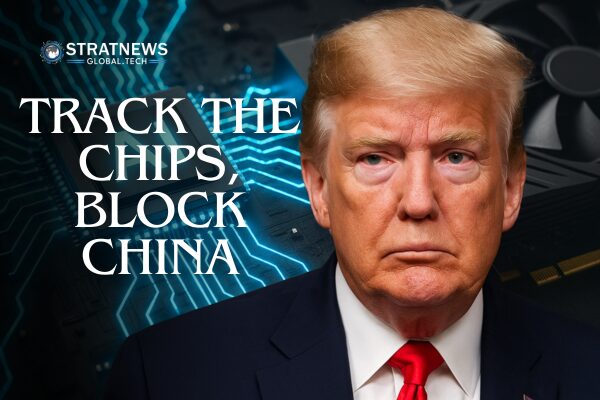The Trump administration has proposed new export rules that would require tracking the physical location of advanced AI chips after they are sold—an effort to prevent them from ending up in countries like China.
The recommendation is part of a wider plan released on Wednesday to guide the future of artificial intelligence exports. It includes steps to boost AI trade with allied nations and ease environmental regulations to speed up construction of data centres that power AI systems.
Denying Advanced Chips to Foreign Rivals
While the plan supports growing exports to allies, it also makes clear that the U.S. will continue to block access to high-end AI chips made by firms such as Nvidia and AMD in countries it sees as adversaries. These chips are considered essential for training powerful AI models.
The policy suggests that the U.S. government “explore leveraging new and existing location verification features” to ensure that AI chips do not end up where they’re banned—such as China.
Lawmakers Support Chip Verification Measures
The idea of location verification has support from both sides of the aisle in the U.S. Congress. Two lawmakers who previously introduced separate but similar bills applauded the Trump administration’s move.
Representative Bill Foster, a Democrat from Illinois, said:
“I was encouraged to see that the recommended export control policy includes location verification mechanisms and aligns closely with our bipartisan Chip Security Act.”
Senator Tom Cotton, a Republican from Arkansas, has also been pushing for such measures in the Senate.
“Senator Cotton was pleased to see verification included in President Trump’s AI Action Plan,” said his spokesperson Patrick McCann. “It’s a vital part of his bipartisan, bicameral Chip Security Act and an important tool to keep advanced American technology out of the hands of Communist China.”
Details Still Unclear
Exactly how these chip-tracking systems would work in practice remains to be seen. The administration and lawmakers have yet to define the technical methods, compliance rules, and the costs such a system might place on manufacturers and buyers.
Both the proposed legislation and the administration’s blueprint acknowledge that more work is needed to sort out how end-use verification would function on a global scale.
with inputs from Reuters


